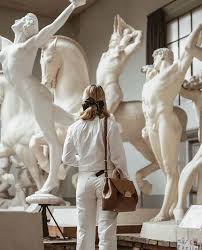Italy: Rome’s Hendrik Christian Andersen Museum

Rome: The Hendrik Christian Andersen Museum in Rome is a temple to Neoclassical sculpture designed to evoke a utopian world.
The Norwegian sculptor and painter Hendrik Christian Andersen lived in Rome from 1896 until his death in 1940.
In the 1920s he built Villa Helene, his neo-Renaissance home on Via P. Stanislao Mancini near Piazzale Flaminio. He bequeathed the building to Italy in his will and today it is part of a group of public museums in Rome.
Behind its rose-pink façade are warehouse-like halls brimming with the artist’s over-sized plaster and bronze sculptures.
Visitors walk under giant leaping stallions, muscular naked athletes and winged angels in a bizarre mix of neoclassical and kitsch.
In addition to the 200 sculptures, there is a significant collection of the artist’s paintings and graphic works, including his grandiose designs for the art-filled ‘World City.’
He described this utopian world capital as “a fountain of overflowing knowledge to be fed by the whole world of human endeavour in art, science, religion, commerce, industry and law”.
Its concept was rejected as “preposterous” and “delirious” by the American author Henry James, a close friend of the young Norwegian.
Christian Andersen’s project was never realised but its plans remain, and his ornate marble tomb can be found in the city’s Non-Catholic cemetery in the Testaccio district.





